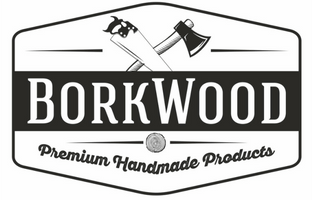Building a Strong SEO Strategy for Lifestyle Blogs | JetRank: Key Insights and Techniques
Building a successful SEO strategy for your lifestyle blog is crucial if you want to attract organic traffic and engage your audience effectively. Focusing on high-quality content and strategically using relevant keywords will not only enhance your visibility but also provide real value to your readers. By implementing effective SEO practices, you can ensure that your blog stands out in a crowded digital landscape.
A well-defined SEO strategy involves understanding what your audience is searching for and creating content that meets those needs. Consider incorporating diverse content formats, such as articles, videos, and infographics, all optimized for search engines. This variety not only keeps your audience engaged but can also significantly improve your search engine ranking.
As you build your SEO approach, remember that quality over quantity is key. It’s better to publish fewer high-quality posts than to flood your blog with mediocre content. By prioritizing thoughtful and informative articles, you can cultivate a loyal readership that returns for more, ultimately driving sustained organic traffic to your blog.
Developing a Keyword Strategy
Creating an effective keyword strategy is essential for increasing the visibility of your lifestyle blog. Understanding search intent and optimizing your content for search engines will help you attract and engage your target audience.
Understanding Search Intent and User Engagement
Search intent refers to the reason behind a user’s search query. It is crucial to identify whether users are looking for information, products, or services when developing your keyword strategy. You should categorize keywords into four main types: informational, navigational, transactional, and commercial investigation.
To identify user intent:
- Conduct keyword research using tools like Google Keyword Planner or SEMrush.
- Analyze top-ranking pages for your target keywords to understand the content that satisfies user needs.
- Use long-tail keywords to capture more specific search queries that align with user intent.
By aligning your content with user intent, you improve engagement and enhance the chances of retaining visitors in the long term.
Optimizing for SERPs and Organic Visibility
To enhance your blog’s standing in search engine results pages (SERPs), optimizing your content with relevant keywords is vital. Focus on incorporating keywords naturally within your content, titles, and meta descriptions.
Best practices for keyword optimization include:
- Place primary keywords in the first 100 words of your content.
- Utilize keyword variations and synonyms to avoid keyword stuffing while maintaining relevance.
- Implement header tags (H1, H2, H3) effectively to organize your content and improve readability.
Regularly monitor your keywords’ performance to adjust your strategy accordingly. This ongoing process ensures your SEO efforts remain effective and that your content remains relevant to your audience’s interests and search queries.
Enhancing Content and Technical SEO Elements
Improving your blog’s content and technical SEO is vital for increasing search visibility and driving traffic. Focus on user experience and content readability while adhering to SEO fundamentals. Utilizing structured data effectively can also enhance your website’s performance.
Improving User Experience and Content Readability
To create a positive user experience, ensure your website is easy to navigate. Use clear headings, bullet points, and short paragraphs to enhance readability. Aim for high-quality content that is informative and engaging.
Utilize tools to measure core web vitals, which impact user experience significantly. These include loading time, interactivity, and visual stability. A fast-loading site not only retains visitors but also satisfies search engine requirements.
Incorporate E-A-T principles (Expertise, Authoritativeness, Trustworthiness) into your content. This builds credibility with your audience and can positively influence your rankings. Your meta descriptions and title tags should be appealing and relevant to entice clicks.
Leveraging SEO Fundamentals and Structured Data
Focusing on on-page SEO fundamentals lays a strong foundation for your blog. Ensure that you are using appropriate title tags, meta tags, and keywords that align with your target audience’s search intent.
Implementing structured data, like schema markup, enhances your content’s visibility. This can result in rich snippets appearing in search results, making your blog stand out. It informs search engines about your content’s context, improving indexing and relevance.
Consider content optimization techniques to align with trending blog post ideas. Regularly updating your content and utilizing keywords effectively makes it more likely to meet user needs. This will help boost your organic traffic and improve your site’s overall SEO performance.







